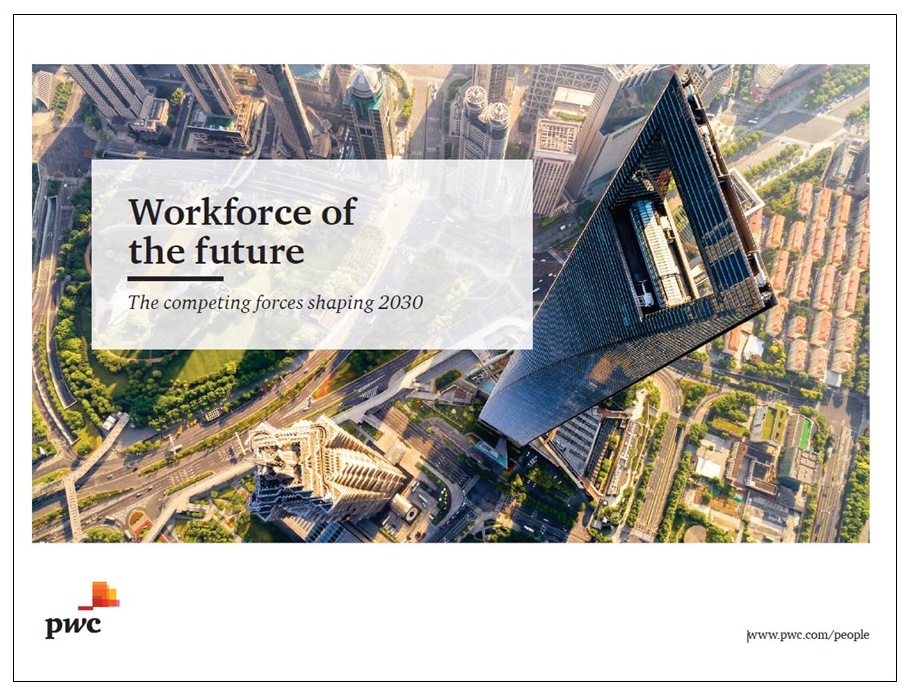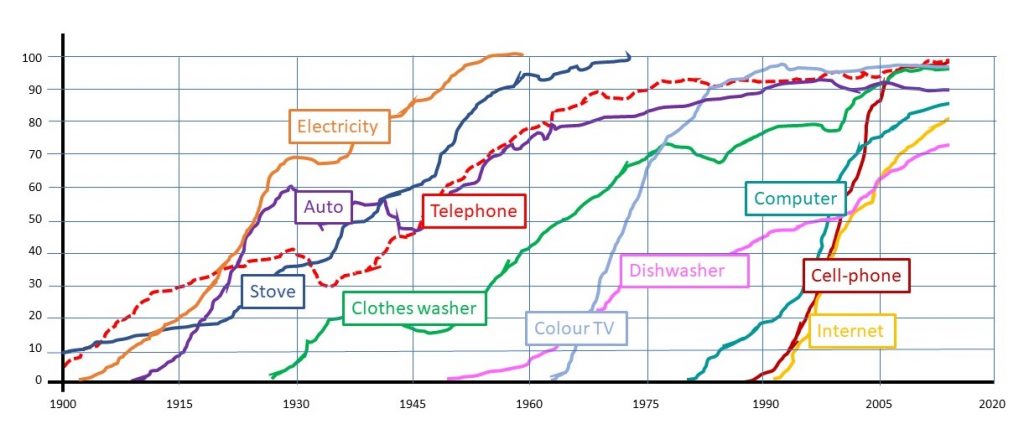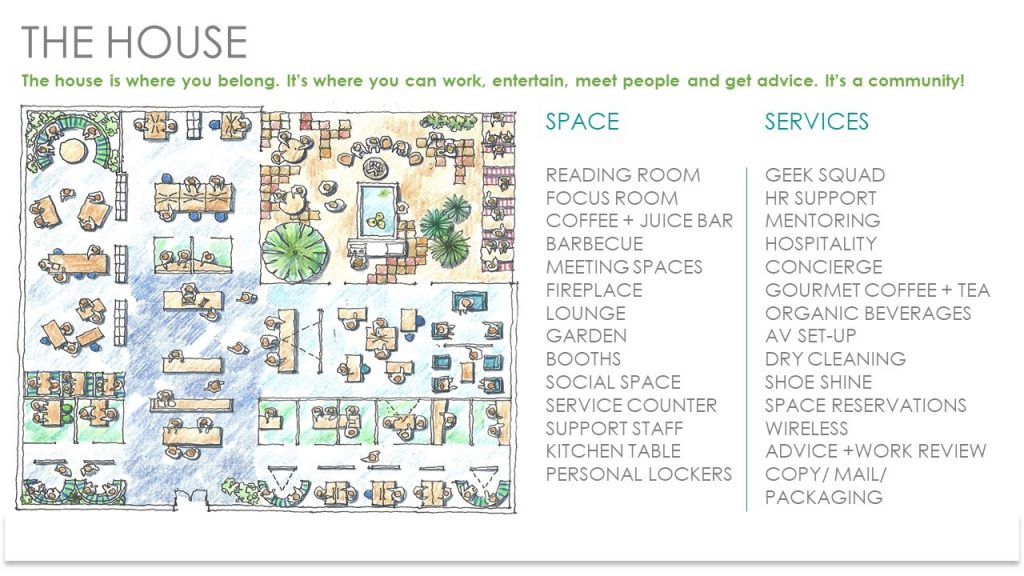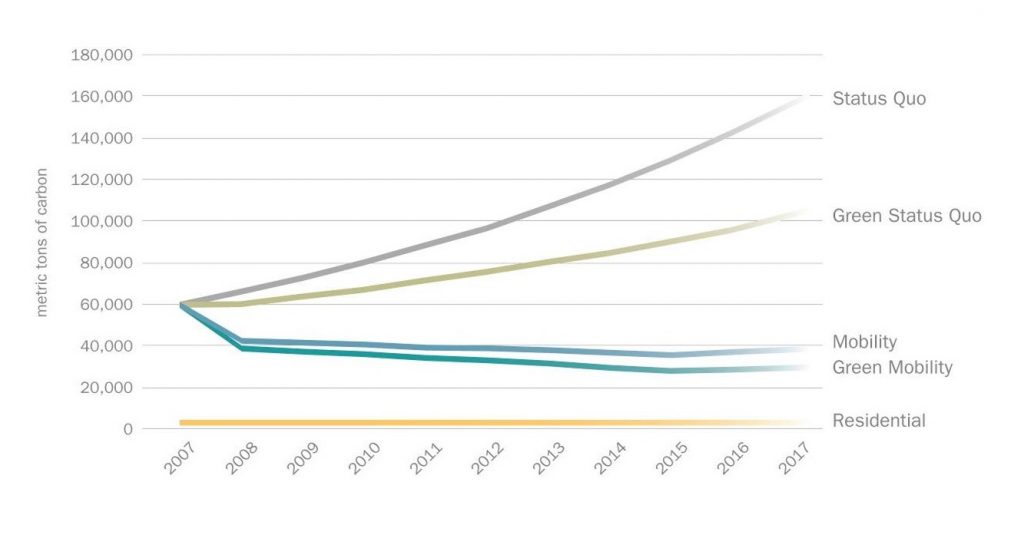by Chris Hood — June 2019 —
The burning platform
PwC (PricewaterhouseCooper) recently issued their “Workforce of the future-The competing forces shaping 2030” report. In it they frame up a view, four different views in-fact, of the world in ten years’ time as their research and strategic insight might predict. This is a compelling read, and while one might take issue with any single prediction, or forecast, what is beyond doubt is the fact that we are likely to look back from 2030 and conclude that we dramatically underestimated the change that has occurred in the meantime and the implication this would have on our lives. 2030 is likely to involve a very different life for many of us. Evidence from today already suggests that the rate of change of almost everything continues to accelerate, making previously absurd views of the future suddenly become real. The referenced report focuses primarily on the workFORCE but, for every shift in the way people go to work, there is a consequent implication to the workPLACE.

Figure 1: PWC’s “Workforce of the future-The competing forces shaping 2030” report is an excellent provocation to think and act.
Facing the future: the impact on the Facility Management profession
This article is designed to achieve four things:
- Alert facility managers to the promise of imminent and significant change.
- Identify some of the more obvious changes we might realistically expect to see in ten years’ time.
- Use some of the workforce predictions in the report to develop a picture of the Workplace in 2030 and with it a deeper understanding of what might happen to the facility management profession
- Help you think about your future role and what you should do to prepare for it.
What does the report say about the future?
The underlying forces for change are clear and hardly a surprise:
Automation and AI are replacing tasks and jobs
Few organizations can clearly predict what this means but for many there is a sense that routine jobs will be lost to artificial intelligence and automation. In an optimistic light many of these jobs could be the dirty repetitive, unhealthy tasks of the past: think auto spray painting booths, to be perhaps, super-ceded by new more-interesting jobs which might take on the tasks that machines are not particularly good at: integration and multi-disciplinary thinking as an example. Few can doubt that less people will be required to run the business empires of the future and, if one of the more jaw-dropping suggestions of the report is to be believed, significantly less people (9% of current populations).
Human values are essential
In a world which could easily be taken over by greed and avarice, human values have never been more important. In order to create an equitable society in which the wealth that is generated by automation is appropriately redistributed, it is necessary to establish that humankind comes first, that wealth is dissipated broadly, that we maintain a sense of fair-play, that we value man-made objects and crafts and that we do so in a world that nurtures our rapidly deteriorating planet.
Business leaders need to act
These changes are not for another future generation to solve. They are here now and require their immediate attention. The report anticipates that the required change is not the slow change of evolution but will require sharp interventions, big leaps….not small steps.
The forces for change
Most change is being driven by large powerful Megatrends: technological breakthroughs, demographic shifts involving the size and distribution of the world’s population, rapid urbanization, shifts in global economic power, resource scarcity and climate change. What is more, the speed with which these disruptors impact our world continues to accelerate.

Figure 2: Furthermore, the adoption of new products and services continues to accelerate with time, for example the telephone took 70 years to reach 80% adoption while the cellphone took only 15 years.
What are the likely impacts on the world of Workplace?
The first thing to note is that 73% of a survey* of over 10,000 people in the developed and developing world were excited or confident about the future. Only 26% were worried or uninterested.
You should be excited……this is a world of possibility ahead of us.
The future size, shape and objectives of the workplace will likely be predicated by a couple of competing forces
Business fragmentation versus Corporate integration
In one scenario, small is powerful- as large businesses lose ground to customers who seek affinity to a more human scale and are connected both socially and value-wise to businesses who think and act like they do. They extend their reach through technology. The opposite of this is the expansion of big business. The biggest become bigger and dominate, but even these will shrink their revenue-to- workforce ratios using a smaller number of extremely bright, well-looked after, individuals to drive innovation that will be multiplied and promulgated through technology advances.
Collectivism versus Individualism
The common-good prevails. Doing the “right thing” for the Community and being fair, usurps the right of the individuals to have whatever they want regardless of the impact on others.
So, let’s get specific, what could this mean for us?
The overall amount of workplace shrinks meaning there will be less workspace and less facility managers as caused by:
- The gig economy continues to grow, and a large part of the work is virtual due to a highly distributed talent-base
- Very high quality, extremely well-serviced space for core staff (but less of them) with easy-connect areas for customers and contracted staff.
- Society divides into those with high financial rewards and benefits and those who don’t. Elitism is back like the big Corporate statements of the 70s and 80s but on a much smaller scale.
- Employees are attracted to those with similar values: the footprint is reduced, levels of automation are agreed, and most employees are outsourced.
Workspace needs to change its nature
- Workers are hired- by the project. Accommodation needs to support flexibility and “temporary”.
- Workplaces are small but built for event-driven high collaboration activity for a limited and planned period
- Teams of different sizes need to be able to form and dissolve quickly
- Top talent is sought early (in the schools). Selecting a job will be like selecting a University in which spirit, culture, reputation, amenities, research and quality of staff are all considered.
- Labor is reorganized into guilds and fraternities: project space is required to bring together skills and services on a project by project basis.
Community is a highly prized virtue of the workplace
- The individual needs to belong to a community to understand trends and what skills are valued most.
- Workplace principles and operations are aligned with societal values
- Top-talent is still in demand but attracted by company values: multi-disciplinary thinking generates the very best workplace experiences
- Workers vote with their feet relative to fairness, sharing of resources, wealth, policies etc.
- Like-minded individuals join forces aided by technology platforms: co-working and makerspaces

Figure 3: The forecast direction raises the likelihood of workplaces becoming more like an academic’s “common room”, a mix of social and work-related elements leveraging our best thinking on community, discussion, nature, wellness and emerging technology. Places designed to celebrate people being together.
The workforce is all about performance
- Employees are beneficiaries of efforts to drive performance: science and medicine are applied liberally to exact even greater performance from the top performers. They are continuously monitored.
Workplaces for the common good
- Exceed, not meet, regulatory standards. Innovation occurs to drive-out waste (space, energy, effort)
- Everything about the workplace has an environmental impact that is measured, understood and improved
- Automation and technology used to protect precious resources and reduce need for travel: high quality collaboration and teamwork becomes a cornerstone of operations
- Crowd-funding allows businesses an easy entry-point. Work is fluid and oscillates between home and a common workplace. Quality of life is prized.
The Facility Manager’s future role
It might be helpful to summarize the above in ways which will allow those pondering their future to think about where the areas of opportunity might lie by considering a limited number of perspectives.
The workforce
The percentage of permanent full-time employees will drop dramatically. The challenge will be to accommodate varying sizes of contracted workers for varying amounts of time. These will constitute by far the largest percentage of employees. The amount to which they work within the employer’s space will depend on attitudes to presenteeism and how collaboration is best achieved. Regardless of which type of worker, workplaces will need to accommodate new levels of diversity and inclusion.
Physical workplace
There is high anticipation that the urbanization of the global population will also be accompanied by an urbanization of core office space allowing efficiency of commuting and connections with other local businesses. Core office space will be shrunk greatly, and space focus will be on engaging with customers and partners and collaborative face-to-face tasks. Virtual working will explode, further reducing the demand for permanent space.
Performance
Today’s workplaces will need to work harder. They will be asked to drive human performance by providing choice, personalized workplace experiences, facilitation of team work and togetherness into high-output collaboration “events”. Highly enabled prototyping and high-capability project workshop space will fuel creativity and maximize the value of having people together under the same roof.
The environment
It could be that the environment becomes the biggest determinant of the size, shape and purpose of our workplaces. More and more individuals and even some governments, are heeding the messages of the failing health of our planet and agree that the workplace can make a significant contribution to its betterment. Based upon the choices we make; we have the capacity to be less present at the office thereby reducing commuting and the amount of workplace required. We can use technology to drive better remote collaboration allowing us to work well together without being present. To keep more airplanes out of the sky would be a great plus. We can also adopt local co-working solutions to which we can possibly walk or cycle and enjoy the benefits of coffee and conversation with local people from other fields. Finally, we can embrace AI and technology to help us address sustainability. We have only just begun to address the potential of monitoring, scheduling and alarms to moderate energy consumption, pollution and the misuse of our precious resources.

Figure 4: Gensler and HP collaborated to explore the impact of driving workplace mobility and virtual work on the environment. The status quo refers to business as usual, the Mobility option refers to space reductions due to organizations embracing mobility in their workplaces and both options also have a green option which further applies best practice measures in CO2 emissions to each of the options. The impact could be transformational.
Implications
This article is not intended to suggest that the immense knowledge and capability that the FM profession has built up over the years is suddenly going to be unneeded; indeed, operational excellence is an assumed starting point. The implications however, of the shifting shape of the workforce, the evolving purpose and size of the workplace itself, the demand for improvements in organizational and individual performance and the likely focus on urgent and extreme need to combat climate change will provide great opportunities for us to “get good” at something else.
We need to understand that we can make a difference, but not alone. For too long now, we have tried to build workplace solutions with a very limited toolkit…typically within our own silos. Perhaps the most exciting and fulfilling part of our future role is to immerse ourselves in other disciplines in search of better answers. Two weeks ago I hosted a conference in London in which a former special service military leader, a puppeteer, and anthropologist, the former science-support director for the wildly successful London British Olympic team, a food expert and a real estate professor got together to discuss the value we could collectively bring to the workplace.
We agreed that the combination could be a game-changer and I encourage you to do the same. By bringing in diverse points of view one quickly opens up new views of “the possible” and is able to redeploy ideas and approaches that have already proved effective in other areas of endeavor. This is really exciting work.
Why don’t you invite some new people to your table?
Along the way, you might want to pick up some new skills that will enable you to flourish in this new world: design thinking, ideation, consultative skills, crafting alliances, understanding productivity, measuring success, integration and change management to name a few. Therein potentially lies your ability to take charge, increase your strategic value to the organization, and open up a whole new world of personal excitement and fulfillment.
Conclusions
- Workplace is wherever work takes place. There is a need to continuously develop our skills and understanding of work and where it’s done as the new world approaches us.
- This will require a substantial rethinking of how leaders and professional development generally are taught to be successful in this new, more complex, trans-disciplinary world.
- AI will impact the service delivery world. For FMs, being knowledgeable and at the forefront of this understanding will be a tremendous advantage.
- The next generation of virtual reality technology is likely to accelerate the acceptability and growth of virtual working: a central assumption of this paper.
- The notion of reduced numbers of management layers is not discussed in this paper but is a probable outcome of the changes ahead. One might expect to see more self-managed teams, self-directed careers and freedom from the shackles that too-many management layers often impose on individuals and organizations.
Author bio
Using “Design Thinking” skills acquired in his Architectural education, Chris Hood has built a career solving large strategic challenges by embracing the broadest possible variety of previously untapped disciplines in the search for new and better workplace solutions; anything from hospitality to data analytics, cognitive science to stage-set design. Chris Hood is a Director of Consulting at Advanced Workplace Associates, a specialist consultancy focused on Workplace strategy and Change Management. https://www.advanced-workplace.com/